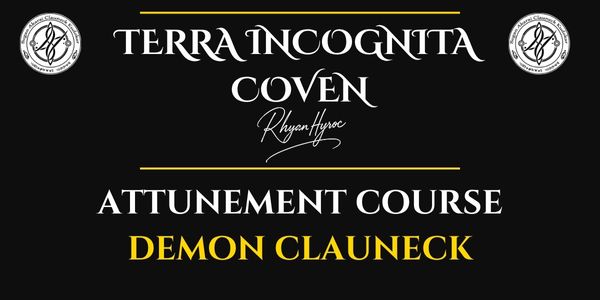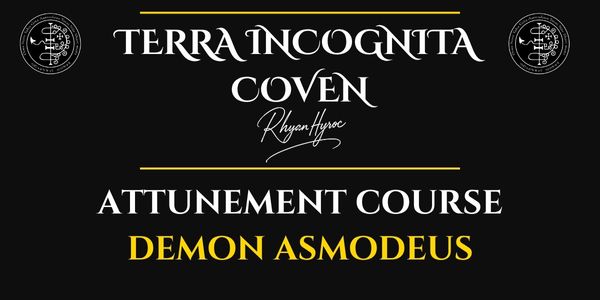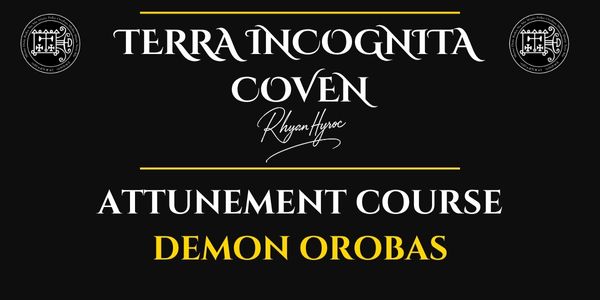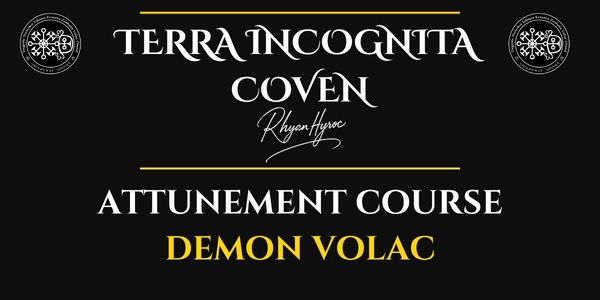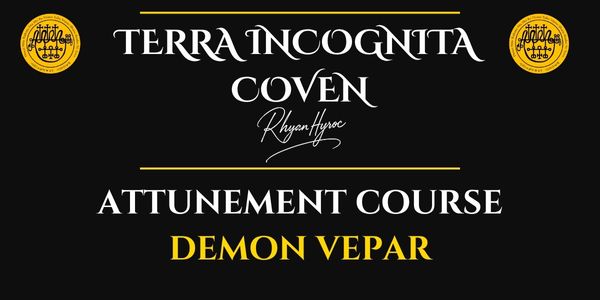Welcome to our Support Portal. Search for answers using the search box below,
or create a support ticket if you cannot find your answer.
Who is Demon Andromalius

Andromalius: The Justiciar of Hidden Treasures and Righteous Punishment in the Ars Goetia
By Rhyan Hyroc, Leading Scholar of the Lemegeton and Ceremonial Demonology
- Andromalius: The Justiciar of Hidden Treasures and Righteous Punishment in the Ars Goetia
- Profile in the Goetia
- Original Description and Modern Translation
- Iconography and Symbolism
- Historical Context and Occult Significance
- Domains of Power
- Ritual Considerations
- Relationship with Other Spirits
- Contemporary Applications
- Ethical Dimensions
- Frequently Asked Questions About Andras
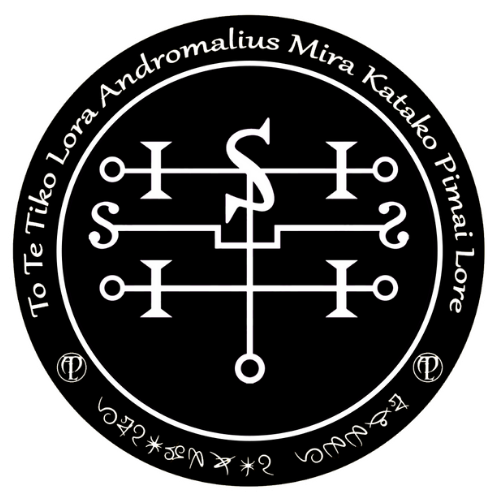
Profile in the Goetia
The seventy-second and final spirit named in the Ars Goetia, Andromalius appears at the conclusion of the infernal register with a sense of deliberate authority. Though lesser-known than many of the preceding names in the grimoire, his function is profound. Andromalius is an Earl commanding thirty-six legions of spirits, and his dominion is the exposure of theft, deception, and hidden wickedness. He is called upon to bring stolen goods back to their rightful owners, punish thieves and liars, and reveal treasures concealed from view. While many Goetic spirits govern abstract powers — such as the movement of winds or the knowledge of languages — Andromalius operates with precision in the domain of justice, acting as a cosmic executor of accountability.
His place at the terminus of the Ars Goetia is not a mark of inferiority, but of culmination. He completes the catalog of spirits with a potent archetype of ethical retribution, where balance is restored not by mercy but by the swift hand of righteous consequence.
Original Description and Modern Translation
Original Goetia Entry (as found in Sloane MS 3825):
“The Seventy-second Spirit in order is named Andromalius. He is an Earl, great and mighty, appearing in the form of a man holding a great serpent in his hand. His office is to bring back both a thief and the stolen goods; to discover all wickedness, and underhand dealing; and to punish all thieves and other wicked people; and also to discover treasures that are hidden. He ruleth 36 Legions of Spirits.”
Modern Translation:
Andromalius is the seventy-second and final spirit in the Goetia. He holds the rank of Earl and manifests as a man bearing a large serpent in his hand. His powers include the recovery of stolen items, the revelation of all forms of deceit and wickedness, and the punishment of thieves and dishonest persons. He also aids in the discovery of hidden treasures. He commands thirty-six legions of infernal spirits.
This translation retains the directness of the original while updating the phrasing for clarity and contemporary practitioners. The emphasis remains on Andromalius’ powers of exposure, retribution, and revelation.
Iconography and Symbolism
The serpent held by Andromalius is rich in layered meaning. In both classical and esoteric symbology, the serpent is a dual sign — at once representing wisdom, transformation, temptation, and protection. In his hand, it becomes an emblem of moral detection. The magician working with Andromalius does not merely seek material recovery but a form of spiritual and ethical rectification.
His human form sets him apart from many of the Goetic spirits who appear as hybrid or monstrous beings. This speaks to his accessible nature — a reminder that his powers are not mythic abstractions but practical forces. The serpent, possibly a nod to the Nechash of Genesis or the Ouroboros of alchemy, grants him the authority to traverse the moral spectrum — from criminal intent to divine punishment.
In ritual work, the serpent is often visualized as coiled around his arm or raised like a staff. Some traditions interpret this as a warning: to summon Andromalius is to invite a force that does not simply reveal deception but confronts it.
Historical Context and Occult Significance
In early demonological treatises, such as Weyer’s Pseudomonarchia Daemonum, Andromalius is either omitted or listed briefly, likely due to his inclusion in the later Lemegeton manuscripts. His prominence rose with the growing influence of English grimoires and ceremonial magic systems in the 17th century. The Goetia’s focus on spiritual hierarchy and efficacy found resonance among magicians seeking tangible results — and Andromalius fit that criterion perfectly.
Unlike more abstract Goetic figures whose operations may require months of symbolic cultivation, Andromalius offers immediate assistance in matters of theft, deceit, and hidden malice. His role as both revealer and punisher aligns him with divine archetypes of judgment found across cultures: the Egyptian Ma’at, the Archangel Uriel, or the avenging figures of Greek tragedy. He is a daemon of consequences — not trickery.
His resurgence in modern ceremonial magic owes much to this practicality. In contemporary grimoires and spirit catalogs, Andromalius is often invoked for spiritual cleansing, integrity restoration, and protective justice.
Domains of Power
Andromalius governs a concise yet potent set of domains:
- Theft and Recovery: Locating stolen property, exposing the thief, and facilitating its return.
- Deception and Fraud: Uncovering lies in business, partnerships, legal matters, and relationships.
- Punishment of the Guilty: Causing thieves, liars, and betrayers to face consequences, both psychological and material.
- Treasure Revelation: Discovering hidden money, documents, and items of value.
- Cleansing of the Environment: Removing the energetic residue left by dishonest people.
- False Accusation Protection: Revealing the truth when one is wrongly blamed or slandered.
- Magical Protection: Acting as a spiritual ward against manipulation or sabotage.
- Justice in Business Dealings: Preventing deceitful contracts or unethical partners.
- Psychological Clarity: Revealing one’s own blind spots and suppressed truths.
- Breaking of Curses and Hexes: Particularly those involving loss, theft, or financial instability.
These domains make Andromalius particularly valued among magicians who blend ethical frameworks with practical results. He is not merely a demon to call in emergencies, but a guardian of hidden order.
Ritual Considerations
Though Andromalius may be invoked alone, he is often worked with at the conclusion of larger Goetic operations — his placement at the end of the grimoire supports this function. He is seen as a force of sealing, truth, and reckoning. In ceremonial operations, his sigil is traditionally drawn in black ink with protective circle work emphasized.
Incense offerings often include storax, myrrh, or crushed juniper, and candles in violet or indigo are preferred — colors associated with mystery and truth. The magician is advised to approach Andromalius with clarity of intent: his domain is not to be manipulated for selfish gain, but for restoration of balance.
In some traditions, it is said that when invoked improperly, Andromalius will reveal the summoner’s own deception. Thus, his workings often begin with an oath of truth.
Relationship with Other Spirits
Andromalius forms a symbolic counterpoint to several other Goetic spirits:
- Bael and Dantalion, who can mask truths or create illusions — Andromalius shatters them.
- Bifrons, who deals with secrets of the dead — Andromalius reveals secrets of the living.
- Paimon, who governs knowledge — Andromalius governs hidden knowledge made known.
In some lineages, Andromalius is paired with angels such as Cassiel (the archangel of Saturn) to enhance karmic justice workings. While he is not explicitly associated with any planetary intelligence in traditional sources, modern magicians often align him with Saturn for his associations with boundaries, truth, and discipline.
Contemporary Applications
In the 21st-century occult revival, Andromalius has found renewed interest among those navigating a world saturated with misinformation, fraud, and betrayal. He is regularly called upon in legal matters, data recovery, identity theft, and social justice activism.
Examples of modern Andromalius operations include:
- Finding the source of spiritual attacks masked by false friends
- Locating a stolen laptop containing vital intellectual property
- Exposing infidelity with empirical clarity
- Recovering hidden bank accounts in estate cases
- Preventing sabotage in collaborative creative projects
Unlike spirits who encourage forgiveness or transformation, Andromalius offers a mirror of consequence. He does not remove conflict — he makes it visible, traceable, and punishable.
Ethical Dimensions
To work with Andromalius is to confront the reality of justice. His operations do not serve revenge, but restoration. The magician must ask: “Is what I seek truly hidden injustice — or simply discomfort?” For this reason, he is often evoked only after other paths have failed. His force is precise but intense.
Practitioners frequently report a feeling of cold clarity during his rites — a dissipation of emotional fog and a sudden surfacing of evidence, names, memories, or confrontations. His revelations are rarely subtle. He is not bound to morality in the religious sense, but to an occult principle of balance: what is taken must be returned, and what is concealed must be seen.
For those called to embody spiritual discernment, recover what was lost, and walk the razor-edge of revelation, Andromalius offers a path through shadow to restitution.
Enroll in the official Terra Incognita Coven 21-Day Attunement to Andromalius
Begin a structured journey of spirit initiation, remote ritual work, and daily energetic alignment with the spirit of justice and hidden truth. This guided process includes 7 ceremonial operations performed on your behalf, a mantra practice, and energetic tools of restoration. Attune now to the force that reveals, recovers, and redeems.
Course Link: https://terraincognitacoven.com/courses/veilbreaker-of-deceit-the-21-day-alignment-with-andromalius/
Frequently Asked Questions About Andras
1. Who is Andras in the Ars Goetia?
Andras is the 63rd spirit listed in the Ars Goetia and holds the title of Great Marquis of Hell. He is a highly dangerous entity associated with discord, conflict, and chaos. Andras commands 30 legions of spirits and is known to incite destruction among individuals and groups.
2. What is Andras’s main function?
Andras specializes in sowing division, especially within communities, partnerships, and political structures. His presence can catalyze endings, disruptions, and the exposure of hidden enmity. He is not a spirit of peace but of revelation through conflict.
3. What does Andras look like?
According to the Lemegeton, Andras appears with the body of an angel and the head of a raven, riding a black wolf and wielding a sharp, flaming sword. His imagery suggests swift, merciless force and the severing of bonds or illusions.
4. Is Andras dangerous to work with?
Yes. Traditional grimoires warn that Andras is perilous and may kill the magician and those close to them if the ritual is not done with strict precautions. He is not recommended for beginners and should only be approached within rigorous ritual structures.
5. When is the best time to summon Andras?
Andras is most aligned with Mars energy and works well during planetary hours of Mars, especially on Tuesdays. His influence is strongest when conflict is already stirring and a transformative rupture is needed.
6. Can Andras be used for baneful magic?
Yes. Andras is a spirit of devastation and can be petitioned for advanced baneful workings such as just retribution, severing toxic ties, or causing confusion among enemies. Extreme caution is always advised, as his energies can spiral unpredictably.
7. What kinds of offerings please Andras?
Andras does not typically require offerings, but some practitioners report that martial incenses like dragon’s blood, iron-based talismans, and blood-red candles sharpen his presence. However, he responds primarily to intention and authority, not gifts.
8. Does Andras work with initiatory change?
Yes. For the skilled practitioner, Andras can function as a spirit of radical transformation through destruction. He clears away false alliances, sabotages illusions, and forces confrontations that reveal hidden truths. His path is one of the sword, not the balm.
9. Can I ask Andras for personal empowerment?
Only in very specific contexts. Andras empowers through harsh lessons—his energy is not nurturing but forging. He teaches power through battle, strength through solitude, and self-reliance through chaos. Those who thrive in conflict may resonate with his current.
10. How can I begin working with Andras safely?
A dedicated initiation is the best route for safe contact. The Blade That Cuts Falsehood – 21-Day Attunement to Andras is a structured ceremonial path that provides protection, discipline, and guidance for those called to his current. Begin here: https://terraincognitacoven.com/courses/andras-21-day-remote-initiation/
References
Ars Goetia Demons – Spirit Encyclopedia of the Lesser Key
A curated online compendium featuring detailed profiles of the 72 spirits from the Ars Goetia, including iconography, rituals, and historical commentary. The entry on Andromalius provides core attributes and modern interpretations.
https://www.arsgoetiademons.com/
Sacred Texts Archive – The Lesser Key of Solomon (Lemegeton)
An open-source archive hosting the full English text of the Lemegeton Clavicula Salomonis, including multiple manuscript variants of the Ars Goetia. This is a primary source reference for all traditional demon listings.
https://www.sacred-texts.com/grim/lks/index.htm
The Goetia of Dr. Rudd – Edited by Stephen Skinner & David Rankine
A scholarly edition that combines traditional Goetia with practical ceremonial notes and angelic correspondences. Rudd’s system contrasts the spirits of the Goetia with protective angels, providing deeper context for Andromalius.
https://www.sskinner.com/goetia-of-dr-rudd.html
The Lesser Key of Solomon (Peterson Edition)
Joseph H. Peterson’s critical edition of the Lemegeton, based on early English manuscripts. It provides reliable translations, footnotes, and variant readings — essential for accurate interpretation of Andromalius’s original function.
https://www.esotericarchives.com/solomon/lemegeton.htm
Occult-World: Andromalius
An accessible entry offering a concise overview of Andromalius’s powers, iconography, and historical function. Useful for comparing popular interpretations with source-based scholarship.
https://occult-world.com/andromalius/
Pact of Prosperous Alignment Attunement to Clauneck for Wealth, Loyalty & Acquisition
Walk the Gilded Path of Wealth and Sovereignty: ClauneckClauneck is the divine banker of the…
The Dominion of Desire & Discipline 21-Day Spirit Initiation with Asmodeus
Enter the Chamber of Desire’s Dominion: AsmodeusAsmodeus is flame and temptation, sovereignty and fire. Called…
Attunement for Demon Orobas The Prince of Truth, Divination & Loyalty
Walk the Path of Loyal Truth: OrobasPrince Orobas is the Celestial Horse—a spirit of truth,…
The Compass of Knowing Flames – Attunement to Volac, Demon of Serpents, Prophecy, and Direction
Walk the Whispering Flame of Direction: VolacVolac is the serpent-borne oracle, the celestial cartographer, and…
The Depth of the Iron Ocean — Attunement to Vepar, Demon of War Currents, Sea Dominion, and Accelerated Decay
Enter the Abyss: VeparVepar is the demon of marine sovereignty, corrosion, storm-binding, and dissolution. She…
The Illuminated Forge – 21-Day Initiation with Azazel
Enter the Forge of Sovereignty: AzazelAzazel is the Bringer of Forbidden Knowledge, the scapegoat of…

